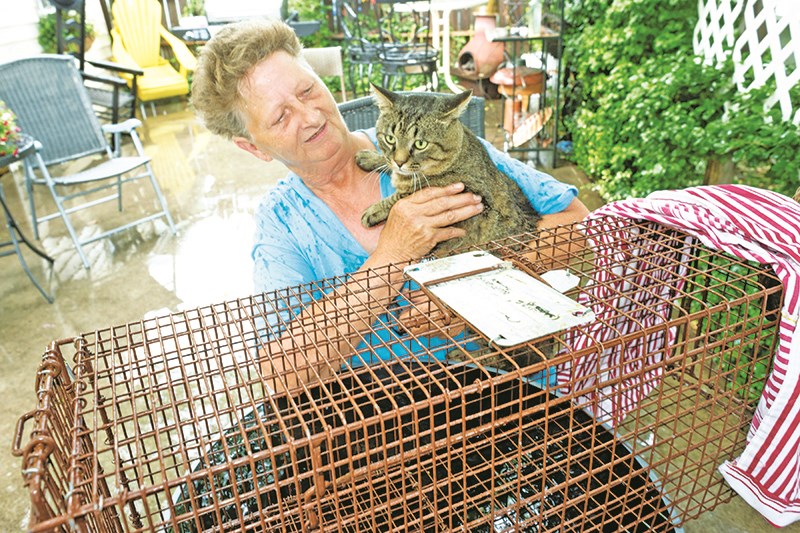Cathy Dobson
A small group of feline-lovers is spending long hours solving the Sarnia’s feral cat problem.
Debbie Temperley and Leanne Symington have been known to wait all night to trap a single stray.
Other times, they’ve caught 15 in an hour. They take the trapped cats to a vet to be spayed or neutered, then release them.
“I believe this is the most effective and humane way to deal with cat overpopulation,” says Symington, who started the effort. “Something needs to be done and this is working.”
She said she and her volunteers have trapped an astounding 2,000 feral cats over the past 18 months. They’ve also set up an adoption program for those that aren’t truly wild. And when it gets dangerously cold in winter they build shelters from insulated Rubbermaid bins and place them in areas with many feral cats.
They call their mission “Cat Chance.”
“These are very devoted people and they’ll sit for hours at a time to catch these cats,” says Temperley, who joined the group two years ago.
“We never leave our cages. You have to be there to make sure the cats aren’t injured.”
The cats are lured into a cage with food, covered with a blanket and taken to a veterinarian for surgery.
Cat Chance regularly gets calls from farmers with too many barn cats.
“We took 17 to London last Friday after we trapped them in a farmer’s yard,” said Temperley, who admits to being allergic to cats but wants to help them anyway.
“When we shipped them to London to get fixed, I could hardly breathe,” she said. “But God has always provided for me and I think I should be able to help his animals. That’s just how I feel.”
Cat Chance also responds to residential requests and has been called in on emergency cases.
“One lady near Wallaceburg had about 40 cats in her house and she was taken to hospital or someplace,” Temperley said. “It was so disgusting. I don’t know how she lived in there.
“We were called in by a neighbour and the humane society had to come with us. We trapped all the cats. The ones that were diseased were put down. Some had to have dental work done. It cost us a fortune.”
Another time, Cat Chance cleared a house in Sarnia with about 30 cats, Symington said.
“We’ve been hired this year by the Town of Petrolia to trap, neuter and release up to 60 cats and we’ve already got close to 40,” she said. “There are so many feral cats there.”
She and several other Cat Chance volunteers have been trained in TNR (Trap, Neuter and Release) in Michigan.
“TNR is the only solution to a very obvious problem,” said Symington, pointing out the feral cats are always returned to their original location because creating a vacuum in an area only invites more cats.
But TNR is pricey and Cat Chance is falling behind on the bills.
Temperley said it’s been a struggle finding vets willing to give Cat Chance a break on surgery costs. One in London helps regularly and provides a discount, as does College Park Animal Hospital in Sarnia.
Each neutering or spaying costs at least $65, money that comes directly out of the volunteers’ pockets.
Symington estimates the group is $5,000 in debt, despite successful fundraisers this summer that included a boat cruise and yard sale.
Cat Chance is also anxious to adopt out cats and kittens now being fostered by the group.
For more, visit www.catchance.weebly.com or see Cat Chance on Facebook.
